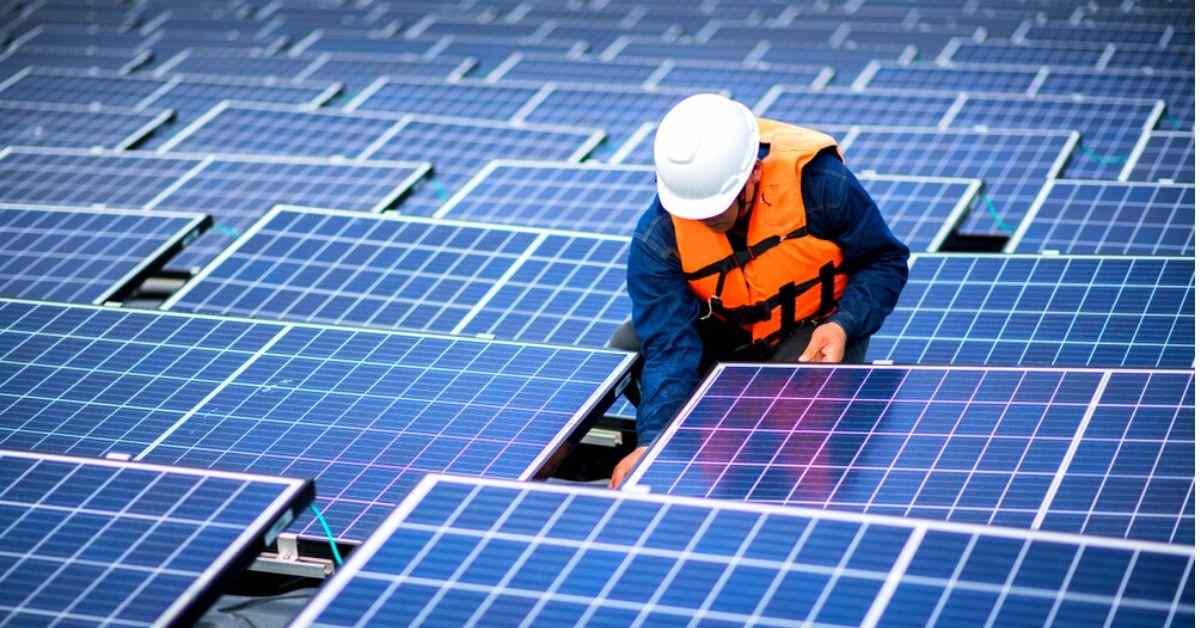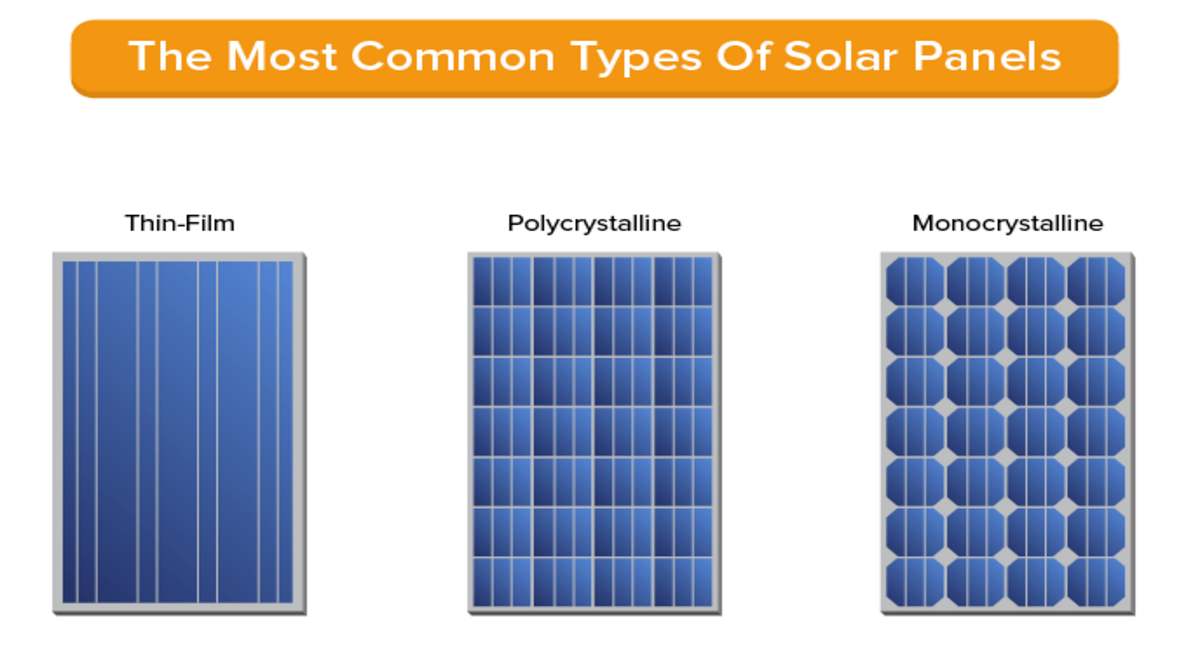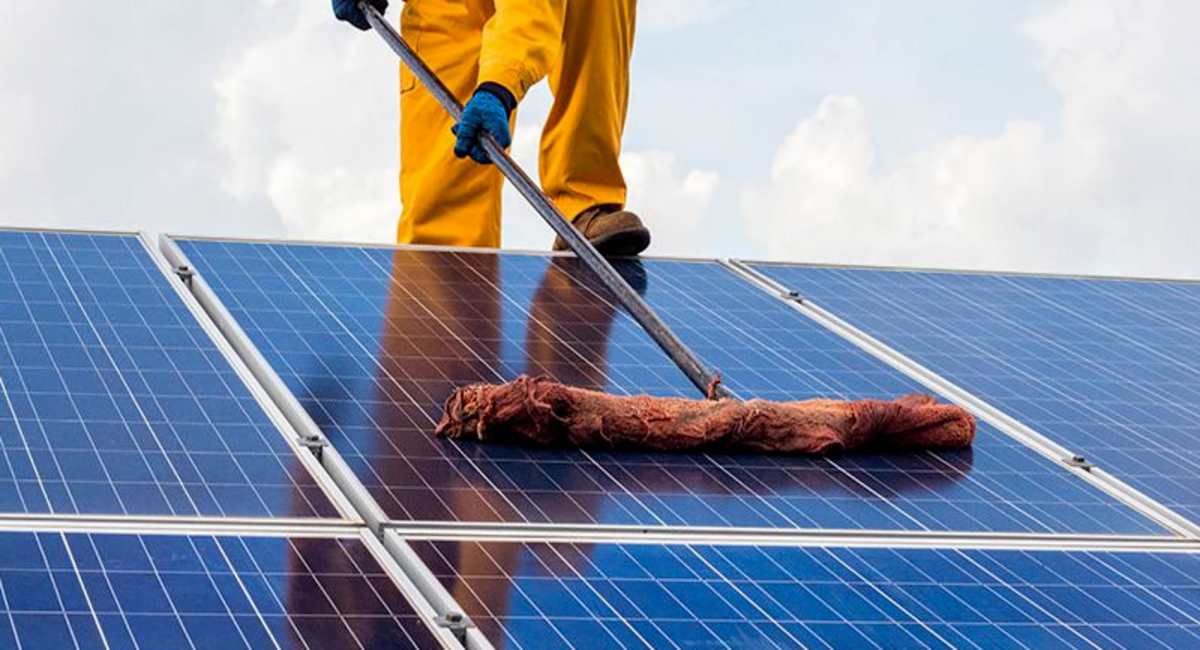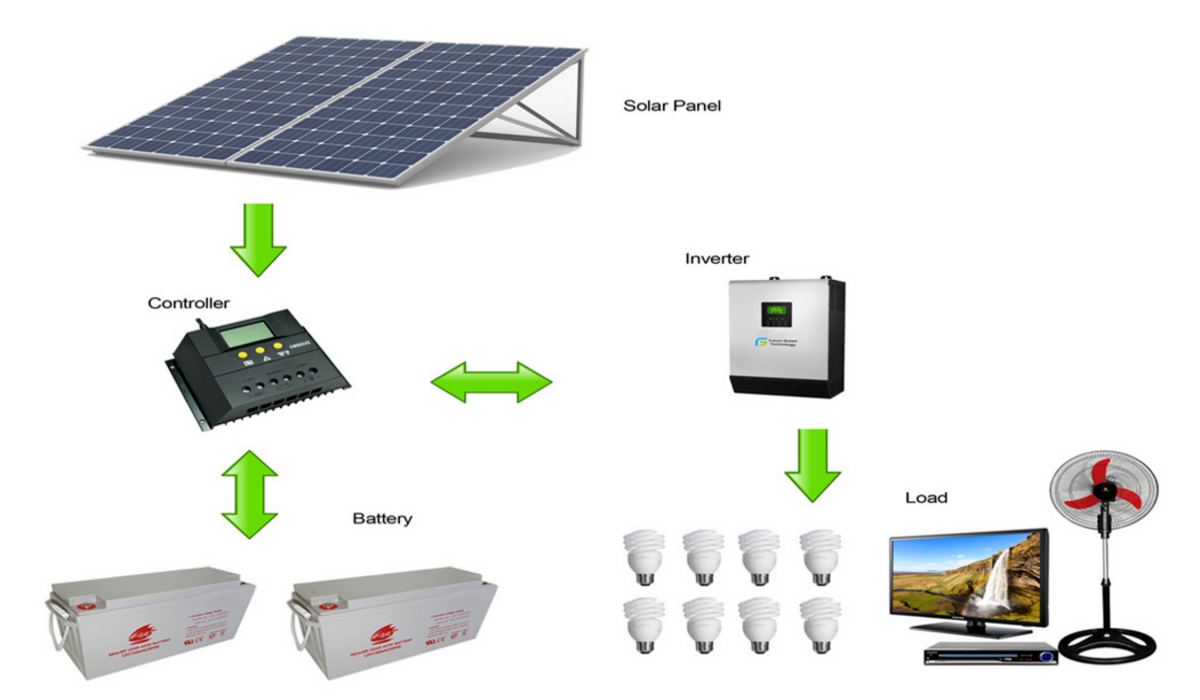What Are Solar Panels Made Of & How Do They Work?

What is Solar Energy?
Solar energy is the most plentiful source of energy on the planet. At any one moment, over 173,000 terawatts of solar energy impact the Earth, which is more than 10,000 times the world's entire energy demands. Solar energy, which captures the sun's energy and converts it into power for your house or company, is a critical option for tackling the present climate catastrophe and decreasing our reliance on fossil fuels. Our sun functions as a natural nuclear reactor. It emits photons, which are small packets of energy that travel the 93 million miles from the sun to Earth in roughly 8.5 minutes. Every hour, enough photons collide with our globe to create enough solar energy to meet the world's energy demands for a whole year.
The International Energy Agency said in 2017 that solar energy had eclipsed all other fuels as the world's fastest-growing source of electricity, marking the first time that solar energy's growth had exceeded that of all other fuels. Since then, the sun has continued to expand and shatter records all across the world.
What is a Solar Panel?
A solar panel, also known as a solar module, is one of the components of a photovoltaic system. They are made up of a succession of solar cells that are organized into a panel. They are available in a number of rectangular designs and are used in conjunction to produce power. Solar panels, also known as photovoltaics, absorb solar energy from the sun and convert it into electricity that may be used to power houses or businesses. These panels may be used to complement the energy in a structure or to supply power in distant regions.
Solar power is used on a large scale in industries and utilities, as well as residential and commercial applications, with the support of solar design software to increase its efficiency and functionality. In this situation, hundreds, if not millions, of solar panels are placed into a massive solar array, or solar farm, which supplies power to large metropolitan populations.
How Do Solar Panels Work?
Solar PV panels are made up of several tiny photovoltaic cells that can convert sunlight into energy. These cells are constructed of semi-conductive materials, most often silicon, which can conduct electricity while retaining the electrical imbalance required to generate an electric field.
When sunlight strikes the semiconductor in a solar PV cell, the light's energy, in the form of photons, is absorbed, causing a number of electrons to be released and float freely inside the cell. The solar cell is made up of positively and negatively charged semiconductors stacked together to provide an electric field. This electric field pushes the electrons to move in one direction—toward the conductive metal plates that border the cell. This flow is referred to as an energy current, and its strength affects how much electricity each cell can generate. When the unbound electrons strike metal plates, the current is guided into wires, letting the electrons flow as they would in any other source of electricity.
When a solar panel creates an electric current, the energy is transferred to an inverter through a network of cables. While solar panels provide direct current (DC) energy, the majority of electricity users need alternating current (AC) electricity to operate their structures. The inverter's job is to convert the power from direct current (DC) to alternating current (AC), making it usable in daily situations. After the electricity is converted into a usable form (AC power), it is delivered from the inverter to the electrical panel (also known as the breaker box) and distributed as required throughout the structure. Solar energy is now widely accessible for powering lights, appliances, and other electrical equipment.
Any power not utilized via the breaker box is sent to the utility grid through the utility meter. The utility meter tracks the flow of power from the grid to your home and back. When your solar energy system generates more power than you need on-site, this meter reverses and you are rewarded for the extra electricity produced via the net metering procedure. When you use more power than your solar array generates, you draw supplementary electricity from the grid through this meter, causing it to function correctly. Unless you have gone entirely off-grid with a storage system, you will need to use some grid electricity, particularly at night when your solar array is not generating electricity. However, most of this grid energy will be offset by extra solar energy generated throughout the day and during times of reduced demand.
What are solar panels made of?
A solar cell is the primary component of any solar panel. A single solar module is constructed from a number of solar cells. These cells are a component of the technology that converts sunlight into energy. The majority of solar panels are built of crystalline silicon solar cells. These cells are made up of silicon, phosphorous, and boron layers (although there are several different types of photovoltaic cells). Once created, these cells are set out in a grid arrangement. The number of these cells employed is mostly determined by the size of the panel being built, since there are several different sizes of cells available.

Aside from the solar cells, a typical solar module has the following components:
The glass casing of the panels provides durability and protection for the silicon PV cells. Solar panels contain an insulating layer and a back sheet behind the glass exterior to guard against heat dissipation and humidity within the panel. This insulation is critical since temperature rises reduce efficiency, resulting in reduced solar panel performance. Solar panels include an anti-reflective coating that enhances sunlight absorption and exposes the cells to the greatest amount of sunlight.
When it comes to silicon solar cells, there are two cell shapes that are often used: monocrystalline and polycrystalline. Monocrystalline cells are composed of a single silicon crystal, while polycrystalline cells are composed of silicon pieces. Monocrystalline formats allow for greater electron movement and hence provide a more efficient solar technology than polycrystalline formats, albeit they are often more costly.
Maintenance of Solar Panels:
The buildup of dust, dirt, pollen, and other particles on solar panels, known as soiling, reduces conversion efficiency, which is normally in the 20% range. In high dust, pollen, or desert areas, a dirty solar panel can reduce its power capabilities by up to 30%, says Seamus Curran, associate professor of physics at the University of Houston and director of the Institute for NanoEnergy, which specializes in the design, engineering, and assembly of nanostructures. The global average soiling loss in 2018 is expected to be between 3 and 4%.
As of 2019, paying to have solar panels cleaned is a worthwhile investment in many areas. Cleaning, on the other hand, is not always cost-effective in certain areas. As of 2013, financial losses caused by soiling were seldom enough to justify the expense of cleaning the panels in California. Every day, solar panels in California lose less than 0.05 percent of their total efficiency.
There are other occupational dangers associated with the installation and maintenance of solar panels. Birds' nests and other debris that may get trapped beneath the solar panels may cause system disturbances, fires if there are any weak connections, or just cause the system to deteriorate over time.
Research conducted in the United Kingdom from 2015 to 2018 looked at 80 PV-related fires, including over 20 "severe fires" directly caused by PV installation, including 37 residential properties and 6 solar farms. In 13 of the occurrences, the fundamental cause could not be determined, while the bulk of the others were caused by bad installation, defective products, or design flaws. The most common single element triggering fires were DC isolators.
According to kWh Analytics' 2021 analysis, the median yearly deterioration of PV systems is 1.09 percent for residential and 0.8 percent for non-residential, which is over double the previously estimated value. According to PVEL module reliability research, solar module failure rates are rising, with 30 percent of manufacturers suffering safety failures due to junction boxes (up from 20 percent) and 26 percent experiencing bill-of-materials failures (growth from 20 percent).

Manual tools, mechanical tools (such as tractor mounted brushes), installed hydraulic systems (such as sprinklers), installed robotic systems, and deployable robots are the five categories of solar panel cleaning technologies. Manual cleaning equipment is by far the most popular cleaning option, owing to its inexpensive purchase cost. According to a 2014 Saudi Arabian study, "installed robotic systems, automated systems, and installed hydraulic systems are likely the three most promising technologies for use in cleaning solar panels."
How Does Weather Affect Solar Energy?
Of course, ideal conditions for creating solar energy involve a clear, bright day. However, solar panels, like most electronics, are more efficient in cold weather than in warm weather. As a result, the panel may generate more power in the same period of time. The panel creates less voltage and produces less power as the temperature increases.
Despite the fact that solar panels are more efficient in cold weather, they do not always generate more power in the winter than in the summer. Sunnier weather is more common during the warmer summer months. In addition to fewer clouds, the sun is frequently visible for a longer period of the day. So, even if your panels are less efficient in hot weather, they will almost certainly generate more power in the summer than in the winter.
Take, for example, clouds. Anyone who has been burnt on a cloudy day understands that solar radiation penetrates clouds. For the same reason, solar panels can generate power even on foggy days. However, depending on the amount of cloud cover and the quality of the solar panels, the efficiency of the solar panels' power output may range from 10% to 25% or more when compared to a bright day.
What Does a Solar Inverter Do?
A solar inverter converts the direct current (DC) power generated by the solar array into alternating current (AC). Inverters act as the system's brains. They offer ground fault protection and system metrics, including voltage and current on AC and DC circuits, energy output, and maximum power point monitoring, in addition to inverting DC to AC power.

Since the inception of the solar business, central inverters have dominated. One of the most significant technological developments in the PV sector has been the introduction of micro-inverters. Micro-inverters, unlike central inverters, optimize for each individual solar panel rather than the complete solar system. This allows each solar panel to work to its full capacity. When a central inverter is employed, a problem with one solar panel (maybe it is in the shadow or has become filthy) might degrade the overall performance of the solar array. Even if one solar panel fails, the remainder of the solar array continues to operate effectively.
What Are The Advantages of Solar Panels?
- Solar panels can be deployed in a broad variety of areas. From bigger, rural solar farms that can sustain local wildlife by providing an undisturbed home for bees, butterflies and nesting birds, to rooftop panels in city centers that may help alleviate fuel poverty.
- Solar panels don’t cause any noise pollution when producing power. This implies that installations aren’t invasive, whether they’re in bustling metropolitan sites or quiet rural ones.
- Solar panels are quite safe. They’re largely manufactured from silicon sheets, and there’s no chance of the photovoltaic cells leaking or producing any poisons or gasses.
Conclusion:
Solar energy has had a successful crisis. Pollution-free skies have enabled solar power plants, which convert light into energy, to grow more productive and dependable in many regions of the globe. Meanwhile, declining demand has resulted in the closure of coal and gas-fired power plants. On April 20th, solar production in the United Kingdom peaked at 9.7 gigatonnes. At the time, this accounted for about 30 percent of the country's electrical supply—ten times the average amount. In Germany, the amount of solar energy in the mix hit 23% for a whole week in April, up from an average of roughly 8% in 2019.
Such statistics, although transient, are remarkable. They argue that solar power has evolved as a result of solar structure design softwares coming into the picture. In some respects, despite solar's new and gleaming appearance, this is the triumph of an ancient technology.

